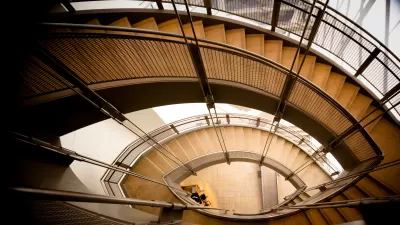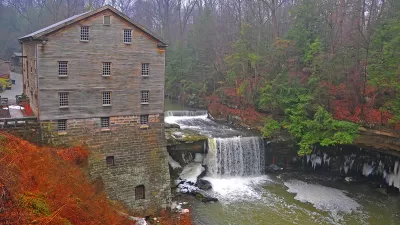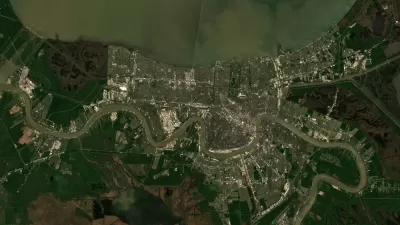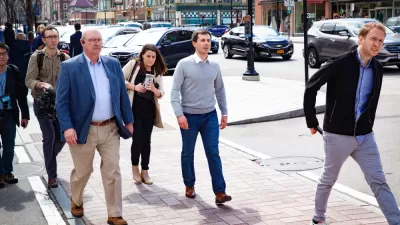Pritzker Prize winner Thom Mayne and leading New Urbanist planner Elizabeth Plater-Zyberk squared off in a debate about the future of Baltimore.

Jared Green reports from a debate that pitted contemporary architect Thom Mayne and New Urbanist planner Elizabeth Plater-Zyberk about the future of Baltimore. According to Green, "[t]heir visions for Baltimore contrast, but the answer to its many economic and social woes may be a little bit of both."
Green summarizes Plater-Zyberk's vision as preserving Baltimore's history at all costs. Plater-Zyberk listed the city's waterfront location, its highly connected street grid, and its historic stock of beautiful buildings as unique assets that could leverage the city revitalization.
Mayne's vision, however, would integrate Baltimore into the global economy. Fans of neighborhoods, new uerbanist or not, might be surprised to hear the crux of Mayne's argument. In his own words: "the precinct, district, township, or neighborhood — the idea of this — is dead. Kids no longer play stick ball in the streets." According to Mayne, there is no on eversion of beauty, as an adherence to the architectural styles of the past might suggest, so Baltimore and other cities like it must pursue a "radical heterogeneity or pluralism."
Green offers his own assessment of the debate, noting a problem "with leading design-thinkers helicoptering in for the day to lay out a city’s future." Green looks around and also sees a lot of efforts already underway to revitalize and redefine Baltimore.
FULL STORY: Which Way to a Better Future for Baltimore?

Planetizen Federal Action Tracker
A weekly monitor of how Trump’s orders and actions are impacting planners and planning in America.

Restaurant Patios Were a Pandemic Win — Why Were They so Hard to Keep?
Social distancing requirements and changes in travel patterns prompted cities to pilot new uses for street and sidewalk space. Then it got complicated.

Map: Where Senate Republicans Want to Sell Your Public Lands
For public land advocates, the Senate Republicans’ proposal to sell millions of acres of public land in the West is “the biggest fight of their careers.”

Maui's Vacation Rental Debate Turns Ugly
Verbal attacks, misinformation campaigns and fistfights plague a high-stakes debate to convert thousands of vacation rentals into long-term housing.

San Francisco Suspends Traffic Calming Amidst Record Deaths
Citing “a challenging fiscal landscape,” the city will cease the program on the heels of 42 traffic deaths, including 24 pedestrians.

California Homeless Arrests, Citations Spike After Ruling
An investigation reveals that anti-homeless actions increased up to 500% after Grants Pass v. Johnson — even in cities claiming no policy change.
Urban Design for Planners 1: Software Tools
This six-course series explores essential urban design concepts using open source software and equips planners with the tools they need to participate fully in the urban design process.
Planning for Universal Design
Learn the tools for implementing Universal Design in planning regulations.
Heyer Gruel & Associates PA
JM Goldson LLC
Custer County Colorado
City of Camden Redevelopment Agency
City of Astoria
Transportation Research & Education Center (TREC) at Portland State University
Camden Redevelopment Agency
City of Claremont
Municipality of Princeton (NJ)





























